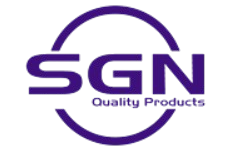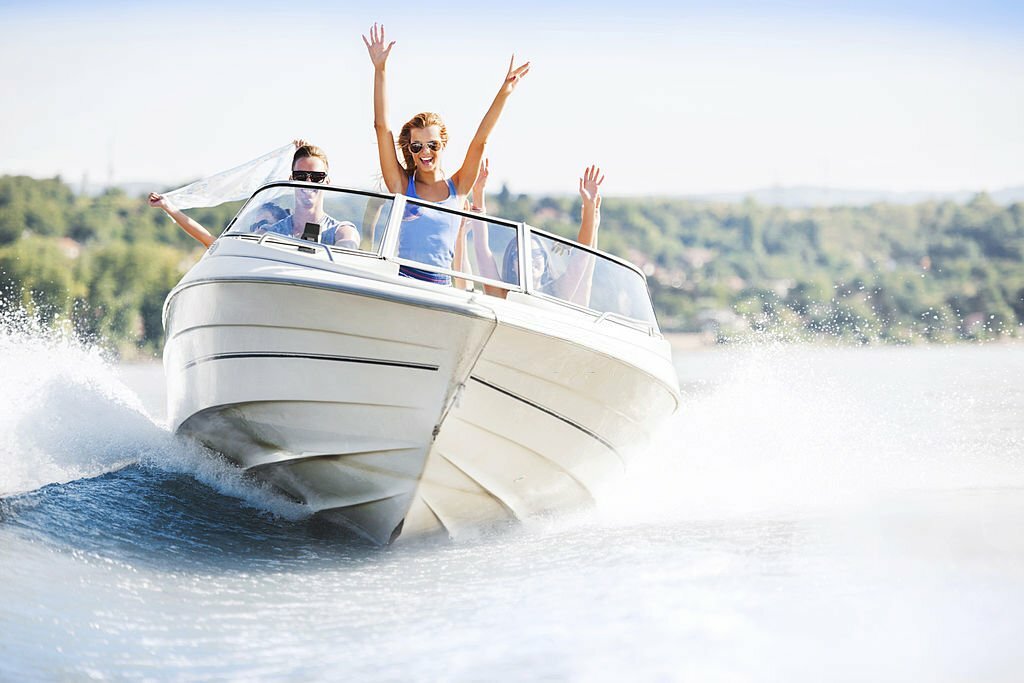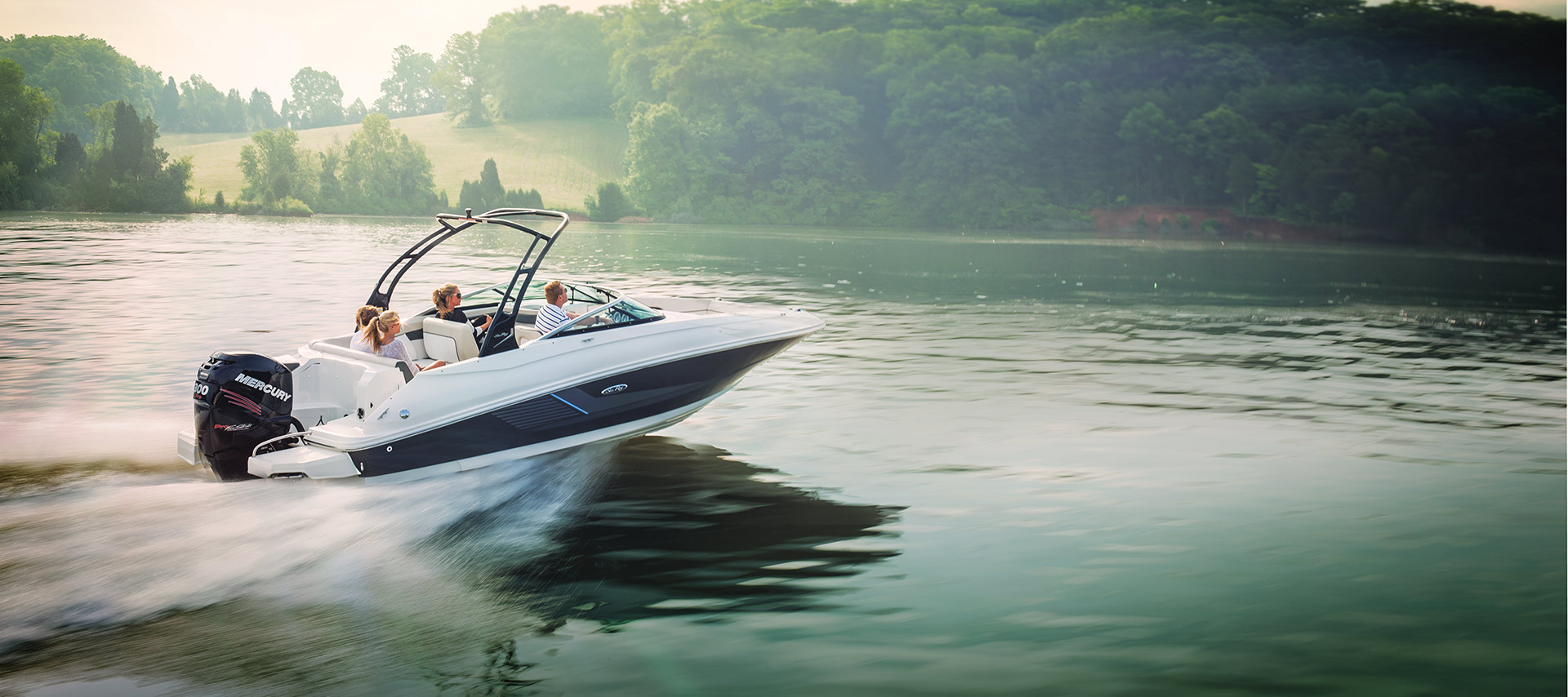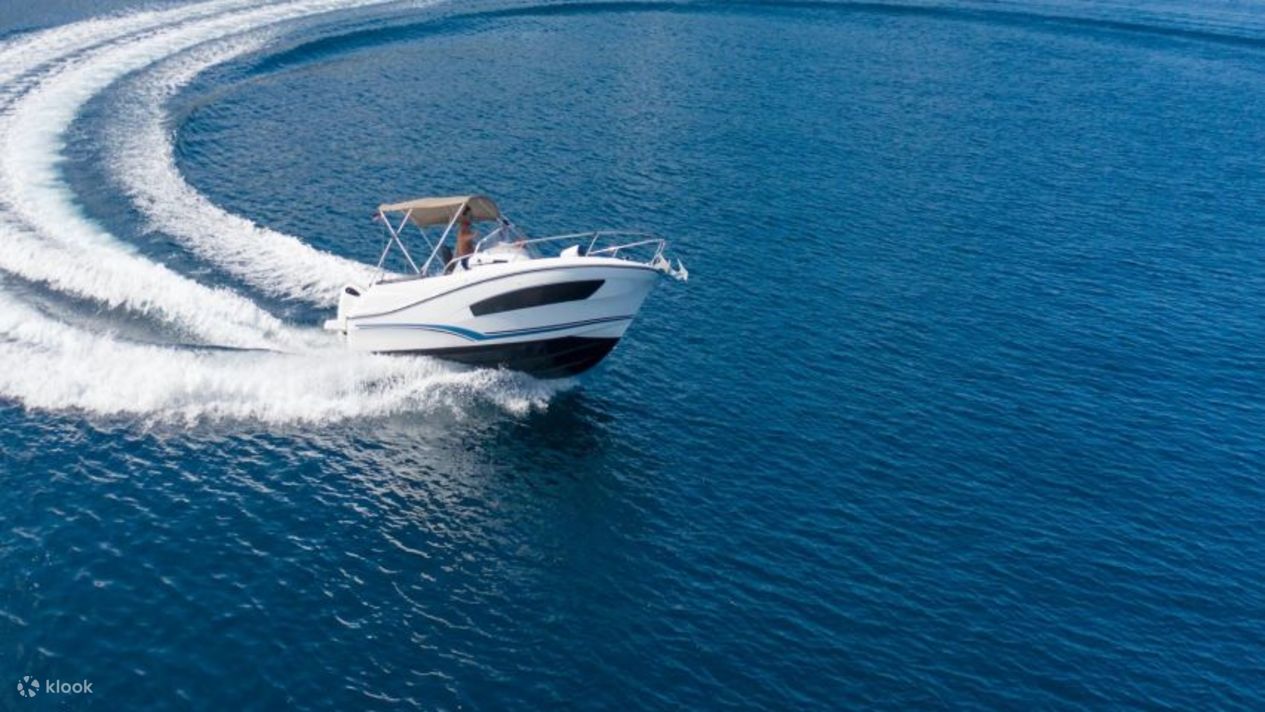The Ultimate Guide to Marine Steering Cables: Selection, Measurement, and Maintenance for Safe Boating Introduction: The Backbone of Safe and Smooth Boating At SGN Marine, we know that a reliable steering system is the absolute backbone of safe and smooth boating. The most critical component of this system is your set of marine steering cables, which efficiently and safely connect your helm (steering wheel) to the outboard motor or rudder. Choosing the correct cable type and accurately determining its length are non-negotiable steps to ensure optimal performance, responsiveness, and safety on the water. This comprehensive guide from SGN Marine is your one-stop resource for all things related to marine steering cables. We will walk you through how to identify cable types, measure cable lengths accurately, select the right heavy-duty or lightweight model, and perform essential maintenance to prolong the life of your system. Trust SGN Marine to guide you toward a steering solution that delivers precise, responsive control for every voyage. What Are Marine Steering Cables and Why Quality Matters? Marine steering cables are flexible, push-pull control cables designed to transmit the rotational movement from your boat’s steering wheel into the lateral movement required to turn the rudder or outboard motor. They are engineered to handle the constant stress, vibration, and corrosive conditions of the marine environment. High-quality boat steering cables are vital because they guarantee smooth, immediate, and responsive steering. A stiff, corroded, or low-quality cable can lead to delayed or jerky steering, which is a major safety hazard, especially in high-speed maneuvers or rough waters. All SGN Marine cables are built with durable stainless steel inner cores and protective, corrosion-resistant outer jackets to ensure maximum longevity and responsive steering performance. How to Identify Your Boat Steering Cable Type Before purchasing a replacement marine steering cable, proper identification is essential. Your steering system is generally classified into two main types: Rotary and Rack-and-Pinion. Step-by-Step Cable Identification: Determine the Cable System Type (at the Helm): Rotary Steering Cable: Look for a spiral-wound black inner core visible at the helm end. This lightweight design is commonly found on smaller boats and is ideal for outboard engines up to 55 hp. Rack-and-Pinion Steering Cable: This system features a long metal housing with a flat rack gear inside. This heavy-duty system is designed for larger vessels and heavier engines, offering highly precise control. Check the Cable End Fittings: Threaded End: Typically used for the lightweight M58 steering cables (engines up to 55 hp). Slotted End with Bolt: Found on the heavy-duty M66 steering cables (engines 60 hp and above). Look for Part Numbers: The most critical identifier! The part number is usually stamped on the plastic jacket, approximately 2 feet from one end. This number contains vital codes indicating the cable’s length, type, and compatible helm unit. How Do I Know What Length Steering Cable I Need for My Boat? Accurate measurement is the most critical step for replacing or installing marine steering cables. An incorrectly sized cable will cause poor steering, accelerate wear, and compromise safety due to slack or excessive tension. 1. Replacing an Existing Steering Cable (The Easiest Method) If an old cable is present, follow these steps: Locate the Part Number: If the number is legible, it will directly indicate the exact cable length in feet. Replace the old cable with a new one of the identical part number. Manual Measurement (If the Part Number is Missing): You must manually measure the casing length (the outer jacket) in inches. For Rotary Cables: Measure the casing in inches, add 18 inches, and then round up to the next full foot. For Rack-and-Pinion Cables: Measure the casing in inches, add 30 inches, and then round up to the next full foot. 2. First-Time Installation (Measuring Cable Run) If you are installing a new system or the original cable is not present, you must measure the total cable path in three distinct sections (A, B, and C) and round the final total up to the next whole foot. Measure A (Steering Wheel to Gunwale): Measure the distance from the centerline of the steering wheel (helm) to the gunwale (side of the boat) in inches. Measure B (Dash to Transom): Measure the distance from the dash to the transom (back of the boat) along the shortest, straightest route in inches. Measure C (Gunwale to Engine): Measure the distance from the gunwale exit point to the cable connection at the centered tiller arm on the engine in inches. Calculate the Total Length: For Tilt Tube Mounting: Add A + B + C, and then add 6 inches to the total. For Transom, Splashwell, or Stringer Support Mounting: Add A + B + C, and then subtract 6 inches from the total. Bend Adjustment: Subtract 4 to 8 inches (10–20 cm) for every severe 90-degree bend in the cable routing path. This precise calculation ensures proper cable sweep and prevents tight bends that lead to premature cable failure. Where Is the Part Number on a Steering Cable? The part number for an SGN Marine or equivalent steering cable is typically stamped into the plastic or protective outer jacket. Location: Look for the numbers about 2 feet (approx. 60 cm) from one end of the cable, usually near the helm fitting. Purpose: The part number is an alphanumeric code that immediately identifies the cable type (e.g., M58 or M66) and its measured length (e.g., 14 for 14 feet). This is the fastest and most reliable way to order the correct replacement. If the number is faded or scratched off, you must revert to the physical identification and manual measurement guidelines provided above. What Is the Difference Between M58 and M66 Cable? SGN Marine stocks both M58 and M66 marine steering cables to meet the specific requirements of different boat and motor sizes. The core difference lies in their design, duty rating, and helm compatibility. M58 Cable (Light-Duty): This cable is compatible with T67 lightweight helms and is designed for motors up to 55 hp. It features
Boat Steering Wheel parts
Complete Guide to Boat Steering Wheel Parts: Anatomy, Types, and Maintenance Understanding your vessel’s helm system is crucial for safety and control. The boat steering wheel parts are an interconnected network of components that translate your input into precise directional movement on the water. Whether you’re upgrading your system or troubleshooting an issue, a detailed knowledge of the anatomy of the helm is essential. This comprehensive guide breaks down the critical boat steering wheel parts, explores different steering system types, and answers the most common questions boaters have about their vessel’s control center. Why Understanding Boat Steering Wheel Parts is Essential The steering system is the lifeline of your boat’s operation. A proper understanding of its components directly impacts: Safety: Ensures immediate and reliable response in challenging conditions or emergencies. Performance: Facilitates smooth handling and precise maneuverability. Troubleshooting: Allows for quick identification and resolution of stiffness, looseness, or failure within the system. Maintenance: Guides proper inspection, lubrication, and replacement schedules, prolonging the life of your helm. The Anatomy of a Boat Steering Wheel System A complete steering mechanism is made up of several key boat steering wheel parts working in unison, from the visible wheel you hold to the connection point at the motor or rudder. 1. The Steering Wheel (The Helm Wheel) This is the most visible and interactive part. As the primary control point, the wheel itself is where the operator initiates a directional change. They typically range from 13 to 20 inches in diameter, depending on the vessel’s size, and feature ergonomic grips, spokes, or stylish designs for aesthetics and comfort. 2. The Helm Unit The helm is the central hub where the steering wheel is mounted. This unit is arguably the most complex component, as it houses the mechanical, hydraulic, or electronic connection that translates the wheel’s rotation into movement. Different boats use different types: Rotary Helts: Common in smaller, mechanical systems. Rack-and-Pinion Helts: Offers more precise steering control. Hydraulic Helts: Use fluid displacement for large or high-horsepower boats. 3. Steering Shaft A rigid metal rod that extends from the back of the steering wheel and connects directly into the helm unit. Its sole purpose is to transmit the rotational force of the wheel directly into the helm mechanism. 4. Bezel Kit The bezel kit is the mounting hardware that secures the steering wheel and helm unit to the console. It includes a cosmetic cover designed to hide the mounting nuts and bolts, giving the control station a polished, finished look. 5. Helm Console (Dashboard) This is the entire control station where the steering wheel, throttle controls, gauges, switches, and navigation electronics are mounted. It is designed to provide the captain with easy access to all control and monitoring tools. 6. Cables or Hydraulic Lines These crucial lines connect the helm unit (the mechanism) to the steering actuator (the motor or rudder). Mechanical Cable Systems: Utilize push-pull cables to physically transmit the movement from the helm to the steering point. Hydraulic Systems: Employ high-pressure fluid lines to transfer force, which provides a much smoother and easier steering experience, particularly on larger engines. 7. Rudder / Outboard Motor Connection This is the final point of control. On inboard boats, the helm system connects to the rudder. On most powerboats, the system connects directly to the linkage of the outboard or stern drive motor, which pivots to steer the boat. Types of Boat Steering Systems The various boat steering wheel parts are configured into three primary system types, each suited for different vessel sizes and power outputs. Mechanical (Cable) Steering Best for: Smaller boats, low-horsepower engines, and shorter runs. How it works: A cable is pulled or pushed through a sheath, directly manipulating the rudder or outboard engine linkage. Pros: Highly affordable and simple to maintain. Hydraulic Steering Best for: Mid-to-large boats, single or dual high-horsepower engines. How it works: Turning the wheel pumps hydraulic fluid, which pushes a cylinder at the motor or rudder, providing significant assist. Pros: Offers smooth, low-effort steering, even with large engines. Electronic (Fly-by-Wire) Steering Best for: Modern, high-end vessels and complex integrated systems. How it works: Wheel rotation is translated into electronic signals, which are sent to a control unit and then to an actuator. Pros: Extremely precise, eliminates mechanical linkages, and often integrates seamlessly with autopilot and GPS systems. Boat Steering Wheel Frequently Asked Questions (FAQs) What is the part of the boat with the steering wheel? The part of the boat where the steering wheel is located is officially called the helm. The helm serves as the vessel’s control center, encompassing the steering wheel, throttle, navigational gauges, and switches. Depending on the size of the boat, the helm may be a simple console in the cockpit, a dedicated wheelhouse, or an elevated flybridge. What are boat steering wheels called? While most boaters simply refer to them as steering wheels, the most common specific term is the helm wheel. Historically, on larger sailing vessels, they were known as the ship’s wheel. In modern nautical terminology, “helm wheel” is widely accepted as the standard term to differentiate it from a car’s steering wheel. Are boat steering wheels universal? Not all boat steering wheels are universal, but a large majority follow a common industry standard for fitting. Most aftermarket and OEM steering wheels are designed to attach to a ¾-inch tapered shaft, which is the most widely adopted fitting for modern mechanical and hydraulic helm units. While the fitment size is often standard, you should always verify the compatibility of a new wheel with your specific helm system (e.g., rotary, rack-and-pinion, or hydraulic) before purchasing. What are boat steering wheels made of? Boat steering wheels are manufactured from several materials, chosen for their durability, maintenance requirements, and aesthetic appeal in the marine environment: Stainless Steel: Highly popular for its extreme corrosion resistance, durability, and classic, high-end appearance, especially favored for saltwater use. Aluminum: Lightweight and cost-effective, often featuring powder coating for added protection against the elements. Wood: Used in traditional, vintage, or
Understanding the Boat Helm: A Comprehensive Guide to Marine Steering
Understanding the Boat Helm: A Comprehensive Guide to Marine Steering For anyone fascinated by boating or exploring maritime culture, the boat helm is one of the most iconic and important parts of a vessel. Whether you’ve heard the term in pirate stories, sailing adventures, or while shopping for a modern motorboat, understanding the helm of a ship is essential. In this guide, we’ll answer popular questions such as what is the helm on a boat, what is a helm in marine terminology, and where is the helm of a boat. We’ll also dive into related topics like the boat steering wheel, helm station, parts of a boat such as the stern and bow, and even the pirate ship steering wheel name. This article is designed for both beginners and seasoned boaters, with keyword-rich insights to help you learn — and for search engines to rank. What is the Helm on a Boat? The helm on a boat refers to the complete steering system and controls that allow a vessel to change direction. Many people mistakenly believe the helm is only the boat steering wheel, but in reality, it encompasses: The steering wheel or tiller – the device turned by the helmsman. Mechanical linkages – chains, rods, or marine control cables that transmit motion. Hydraulic or electric systems – on modern boats, helm power systems make steering easier. The rudder or outboard motor connection – which physically redirects the vessel. Feedback instruments – gauges showing rudder angle or wheel position. The helmsman, the person operating the helm, is responsible for controlling the boat’s direction. On many vessels, the helm is part of a larger helm station, which also includes navigation instruments, throttle controls, and safety systems. What is a Helm in Marine? In marine terminology, the helm goes beyond being just the steering wheel. It represents the entire control system for steering. Boat steering wheel (ship’s wheel): This can range in size, with small boats using compact 10–15 inch wheels, while larger vessels may use wheels up to 30 inches or more. Helm power on a boat: Refers to hydraulic or electric assistance that makes steering smoother, especially useful in large vessels or rough seas. Rudder system: The underwater fin that actually changes the boat’s direction. Helm station: The command center where the wheel, controls, and navigation devices are located. Symbolically, the helm has always meant leadership and command. The phrase “taking the helm” is used both literally and figuratively, meaning to assume control. Where is the Helm of a Boat? The location of the helm depends on the type of boat: Small recreational boats: The helm is usually found in the cockpit or console area, often on the starboard (right-hand) side. Larger yachts and ships: The helm is located in the bridge or pilothouse, often centralized for maximum visibility. Pirate ships and classic sailing vessels: The helm was positioned aft (rear) with a large wooden wheel connected by ropes and pulleys. In most modern designs, the helm station includes not just the wheel but also throttle levers, GPS, communication radios, and safety switches, making it the boat’s true control hub. Boat Steering Wheel Size and Design One of the most common questions is: What size is a boat steering wheel? Small boats: Usually feature compact steering wheels (10–14 inches) for easy handling. Mid-size boats: Often use 15–18 inch wheels, providing better leverage. Large yachts or ships: Wheels can reach 24–36 inches or more, allowing precision control of heavy rudders. The design also varies — from classic wooden wheels (as seen on pirate ships) to modern stainless steel or composite wheels used on contemporary vessels. Helm Power on a Boat Modern vessels often feature helm power systems to assist steering. This can be: Hydraulic helm power: Uses pressurized fluid to move the rudder, reducing manual effort. Electric helm power: Uses motors to adjust steering quickly and smoothly. Power-assisted steering: Similar to a car’s power steering, making it easier to maneuver large boats with minimal force. This technology ensures smooth, responsive steering, even in challenging waters. What Part of a Boat is the Helm? When asking what part of a boat is the helm, it’s important to remember that it’s not a single piece but rather a combination of components: The wheel or tiller The linkages/cables The rudder or motor control The helm station console Essentially, it’s the area that connects the helmsman’s actions to the boat’s directional movement. What is a Boat Helm for Kids? For children learning about boating, the boat helm can be explained simply: It’s the steering wheel where the captain drives the boat. Many kids’ playsets and educational exhibits include toy helms modeled after a pirate ship helm or traditional wooden wheel. These child-friendly replicas introduce kids to parts of a boat, basic navigation, and the fun of pretending to be a ship’s captain Helm of a Ship Photos and Pirate Ship Helm The pirate ship helm, often depicted in movies, consisted of: A large wooden wheel with spokes A central hub connected to ropes and pulleys Placement at the stern (rear) of the ship for control over the rudder Today, helm of a ship photos highlight how designs evolved from traditional timber to modern carbon fiber or stainless steel wheels on luxury yachts. The pirate ship steering wheel name is simply “ship’s wheel” or “helm wheel,” though it has become iconic in pirate lore. Stern and Bow of a Boat To fully understand the helm, you should also know basic parts of a boat: Stern of a boat: The rear section, where steering mechanisms (rudder, propeller) are located. The helm traditionally sits here. Bow of a boat: The front, pointing in the direction of travel. Steering at the helm adjusts the stern’s control surfaces, which in turn shift the bow left or right. This basic orientation is crucial for navigation. How Many Wheels in a Boat? Most boats and ships have a single steering wheel at the helm. However: Large vessels sometimes feature dual helm
Helm and Steering Systems: The Heart of Smooth Marine Control
For any boat, the helm and steering system serve as the nerve center of navigation. Without reliable steering, even the most powerful engine becomes a liability. At Alpha Flex, we design and manufacture helm units and steering cables that ensure effortless and safe boat handling, whether you’re docking, cruising, or tackling rough seas. What Makes a Great Helm and Steering System? 1. Precision Steering:A well-engineered helm system translates your hand movement into immediate, accurate responses. This precision reduces fatigue and boosts safety, especially during long voyages. 2. Smooth and Effortless Movement:Helms combined with low-friction steering cables ensure smooth operation with minimal physical effort. This is particularly crucial when maneuvering larger vessels. 3. Durability in Tough Conditions:Helm and steering systems must withstand continuous exposure to salt, sun, and stress. Alpha Flex products are designed to last, with corrosion-resistant materials and heavy-duty construction. Alpha Flex Helm and Steering Cables: Built for Excellence Helm Units:Our helms feature rugged designs with high-efficiency gear mechanisms or rack-and-pinion systems for maximum control. Compact and easy to install, they are compatible with a wide range of vessels. Steering Cables:Built with marine-grade materials, our cables offer superior corrosion resistance, flexibility, and durability. Every cable is tested under rigorous marine simulation to ensure peak performance. Why Trust Alpha Flex? Custom Manufacturing: From small personal boats to commercial vessels, we provide helm and steering systems customized to your needs. Advanced Engineering: Our products are designed by marine industry experts who understand the critical demands of boat steering. Quality You Can Count On: Every Alpha Flex component undergoes strict quality control to ensure unmatched reliability and safety. Conclusion:Your steering system is not an area where you can afford compromise. Equip your boat with Alpha Flex helm and steering cables — precision-built for maximum control, durability, and safety on every voyage.
The Importance of High-Quality Boat Steering Cables for Safe Navigation
Blog The Importance of High-Quality Boat Steering Cables for Safe Navigation When you’re out on the water, smooth and reliable steering isn’t just a convenience — it’s a matter of safety. That’s why investing in a high-quality boat steering cable is essential. At Alpha Flex, we are committed to providing steering solutions that give boat owners complete control and peace of mind. How Steering Cables Work Boat steering cables transfer the movement from the steering wheel to the boat’s outboard motor or inboard rudder. A smooth and responsive cable allows for easy handling, quick directional changes, and reduces driver fatigue — critical when navigating busy marinas, rough seas, or tight spaces. Signs You Need to Replace Your Steering Cable If you experience any of these symptoms, it’s time to upgrade your system with Alpha Flex steering cables. What Makes Alpha Flex Boat Steering Cables Different? 1. Superior Corrosion Resistance:Our cables are built with marine-grade stainless steel cores and protective outer jackets that resist saltwater, UV rays, and harsh chemicals. 2. Low Friction Operation:Designed for minimal drag, our cables ensure easy turning, even under heavy loads and rough sea conditions. 3. Custom Solutions:Every boat is different. That’s why we offer a wide range of cable lengths, thicknesses, and fittings tailored to your vessel’s needs. The Alpha Flex Promise Every Alpha Flex cable undergoes stringent testing for strength, flexibility, and durability. Our cables are not just products; they are essential safety tools built to perform when you need them most. Conclusion:A high-quality boat steering cable can dramatically improve your vessel’s performance and safety. Alpha Flex brings you durable, reliable solutions you can trust — so you can enjoy every journey, no matter where the water leads you.
Choosing the Right Engine Control Cable: What You Need to Know
Blog Choosing the Right Engine Control Cable: What You Need to Know When it comes to optimal engine performance, one critical component that often gets overlooked is the engine control cable. At Alpha Flex, we understand how essential reliable control cables are for both safety and engine efficiency. Whether you are dealing with marine engines, industrial machines, or automotive systems, selecting the right cable can make all the difference. Why Engine Control Cables Matter Engine control cables are responsible for transmitting commands like throttle, choke, and gear shifting from the driver to the engine. Poorly functioning cables can cause sluggish responses, safety hazards, and unnecessary wear on the engine. A well-chosen, high-quality control cable ensures smooth, precise, and quick operation. Factors to Consider When Choosing an Engine Control Cable 1. Application Type:The first step is understanding where and how the cable will be used. Marine environments, for example, require cables with superior corrosion resistance, while industrial machinery might need higher tensile strength. 2. Cable Material:Materials like marine-grade stainless steel offer excellent durability and corrosion resistance. At Alpha Flex, our cables are manufactured with top-grade materials designed for demanding conditions. 3. Cable Length and Travel Distance:The correct length ensures proper control without unnecessary slack, which can lead to delayed responses or cable fatigue. 4. Environmental Resistance:If the cable will be exposed to saltwater, extreme temperatures, chemicals, or heavy vibration, it’s critical to choose one with protective jackets and reinforced inner cores. Why Alpha Flex? At Alpha Flex, we specialize in custom-manufacturing engine control cables that meet your exact requirements. Our cables deliver maximum strength, smooth operation, and long life, thanks to our rigorous testing and precision engineering. We provide flexible solutions for marine, industrial, and automotive sectors with a focus on quality and safety. Conclusion:Choosing the right engine control cable ensures better performance, extended equipment life, and greater safety. Trust Alpha Flex for cables built to exceed expectations — because your engine deserves the best.




